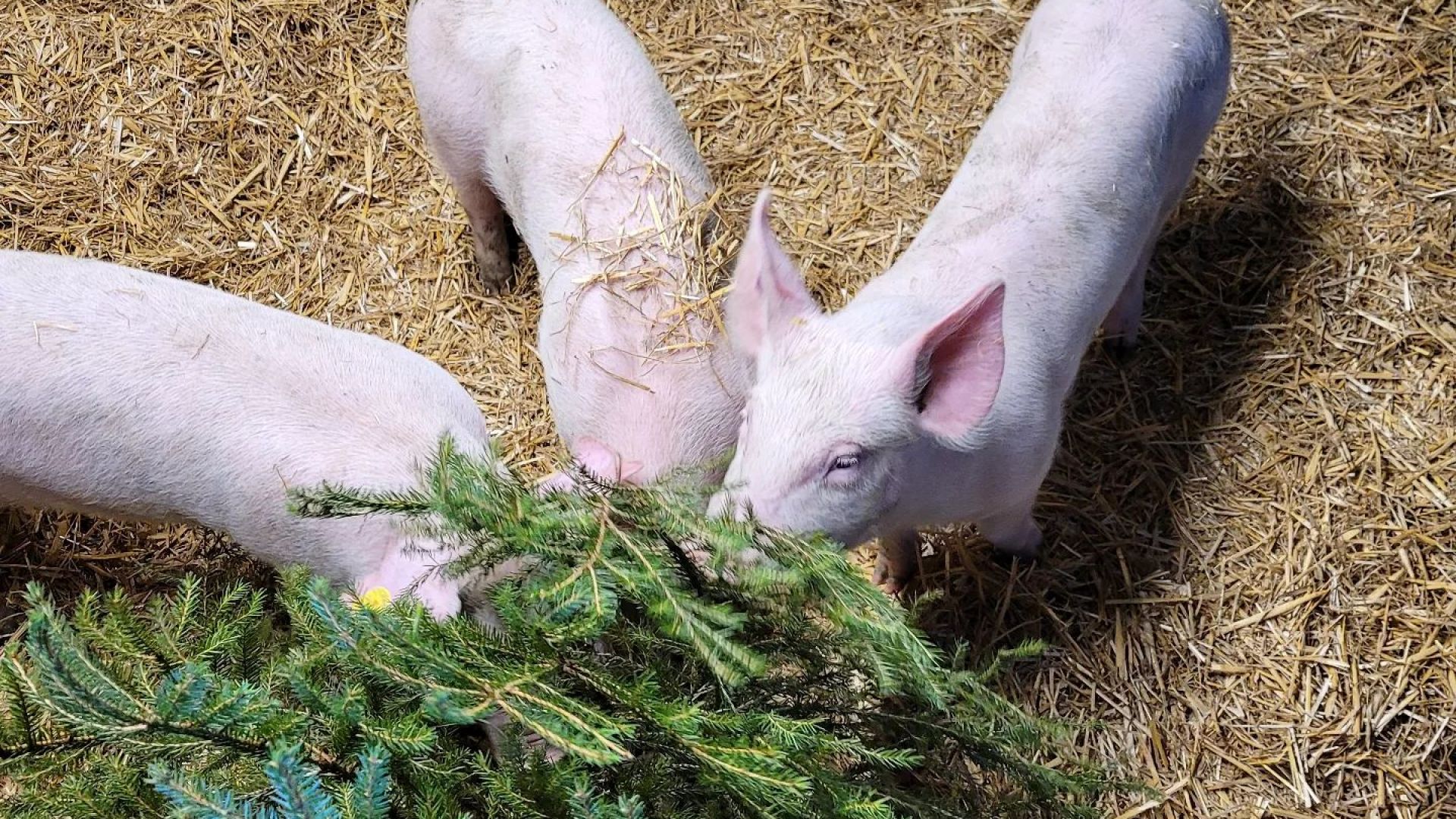Christmas trees against tail biting?

Wood is an ideal enrichment material for piglets. Pig welfare expert Dr Irene Camerlink reflected on this in the pages of Pig Progress after seeing the Christmas trees thrown away in January. Pinewood, which can be obtained for free, can be a cheap alternative to buying toys and can help reduce tail-chewing.
Next to straw, wood is one of the best options for attracting and maintaining the interest of pigs. It can be investigated, manipulated, chewed and it does not matter if small pieces are swallowed. Wood is also durable, widely available, low risk from a biosecurity point of view and in many cases can be sourced locally at low cost. It can also be provided in different diameters for animals of different sexes and ages (growing piglets, sows, boars).
Wood types differ in their softness and moisture content. In one study, pigs consumed spruce posts more quickly than beech, larch or Scots pine. Soft wood therefore needs to be replaced more quickly. None of the tree species caused any internal damage (e.g. damage to the mouth, digestive tract or liver). Although spruce is favoured by pigs, it did not result in less tail chewing in two studies in Ireland (1080 pigs). However, in a Finnish study (780 pigs), where fresh wood was suspended horizontally, piglets showed less tail and ear biting. In conclusion, there is no guarantee that fresh wood reduces tail biting, but it seems to pose little risk to pigs and keeps them busy for a while.